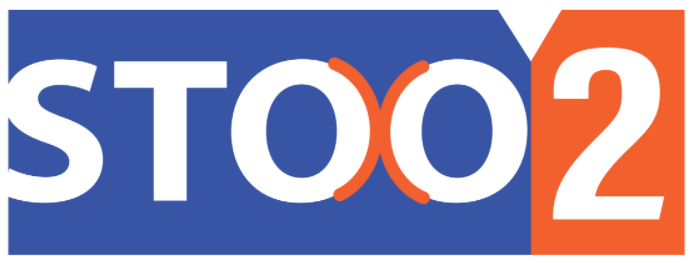| ##### **Iva Vuljak1, Božica Vuić2** 1 *Osnovna škola Ivana Kukuljevića, Sisak* 2 *Sveučilište u Zagrebu, Učiteljski fakultet* |
| **Učenje i p(r)oučavanje hrvatskoga jezika, književnosti, dramske i medijske kulture** | Broj rada: 70 | **Prethodno priopćenje** |
| ##### **Sažetak** |
| Usvajanje vokabulara važan je prediktor dubinskoga čitanja, to jest čitanja s razumijevanjem, općenito obrazovanja i cjeloživotnoga učenja. Učitelji već u prvome razredu primarnoga obrazovanja potiču učenike na učenje novih riječi, njihova značenja te upotrebljavanje tih riječi u govornom i pisanom izražavanju. S obzirom na to da je pozornost istraživača (Bežen, Kolar Billege i Budinski, 2013; Vuić, Bernić i Marković, 2014) usmjerena na usvojenost vokabulara djece rane i predškolske dobi te rane školske dobi, glavni je cilj ovoga rada ispitati usvojenost značenjske strukture vokabulara studenata učiteljskog studija na korpusu tekstova obvezene lektire iz kolegija Dječja književnost. U istraživanju su sudjelovali studenti četvrte i pete godine učiteljskog studija iz Petrinje, Čakovca i Zagreba, koji studiraju na Učiteljskom fakultetu Sveučilišta u Zagrebu (N = 150). Istraživanje je provedeno tijekom svibnja 2020. godine polustrukturiranim anonimnim *online* upitnikom. Kvantitativni rezultati upitnika obrađeni su u MS Office paketu (Excel). Dobiveni rezultati ukazuju na to da ni za jednu od 15 navedenih riječi u upitniku svi ispitanici nisu napisali značenje koje je sukladno leksikografskoj definiciji, odnosno za neke riječi napisana su netočna značenja. U skladu s dobivenim rezultatima potrebno je više pozornosti posvetiti usvajanju značenjske strukture vokabulara i dubinskome čitanju budućih učitelja. |
| ***Ključne riječi*** |
| *čitanje s razumijevanjem; dubinsko čitanje; studenti učiteljskog studija; vokabular; značenje riječi* |
| **NE ZNAM (ODGOVOR)** | **TOČNO NAPISANO ZNAČENJE RIJEČI** | **BLISKO ZNAČENJE RIJEČI** | **NETOČNO ZNAČENJE RIJEČI** | |
| **Broj studenata** **(Postotak)** | ||||
| **KOTARICA** | ***71 (47,33 %)*** | ***68 (45,33 %)*** | ***9 (6,00 %)*** | ***2 (1,33 %)*** |
| **UBOG** | ***3 (2,00 %)*** | ***131 (87,33 %)*** | ***1 (0,67 %)*** | ***15 (10,00 %)*** |
| **KLINCI** | ***1 (0,67 %)*** | ***96 (64 %)*** | ***53 (35,33 %)*** | ***0 (0,00 %)*** |
| **RUBAC** | ***0 (0,00 %)*** | ***137 (91,33 %)*** | ***13 (8,67 %)*** | ***0 (0,00 %)*** |
| **ŠEGRT** | ***1 (0,67 %)*** | ***105 (70,00 %)*** | ***10 (6,66 %)*** | ***34 (22,67 %)*** |
| **TANAŠAN** | ***23 (15,33 %)*** | ***111 (74,00 %)*** | ***3 (2,00 %)*** | ***13 (8,67 %)*** |
| **TOPORIŠTE** | ***128 (85,33 %)*** | ***18 (12,00 %)*** | ***2 (1,33 %)*** | ***2 (1,33 %)*** |
| **GAKANJE** | ***6 (4,00 %)*** | ***98 (65,33 %)*** | ***37 (24,66 %)*** | ***9 (6,00 %)*** |
| **MUČNJAK** | ***122 (81,33 %)*** | ***2 (1,33 %)*** | ***21 (14,00 %)*** | ***5 (3,33 %)*** |
| **SVEŽANJ** | ***20 (13,33 %)*** | ***71 (47,33 %)*** | ***47 (31,33 %)*** | ***12 (8,00 %)*** |
| **DJEVER** | ***10 (6,66 %)*** | ***61 (40,66 %)*** | ***0 (0,00 %)*** | ***79 (52,66 %)*** |
| **SVAROŽIĆ** | ***30 (20,00 %)*** | ***108 (72,00 %)*** | ***3 (2,00 %)*** | ***9 (6,00 %)*** |
| **DUB** | ***50 (33,33 %)*** | ***93 (62,00%)*** | ***0 (0,00%)*** | ***7 (4,66 %)*** |
| **KEPČIĆ** | ***62 (41,33 %)*** | ***63 (42,00 %)*** | ***24 (16,00 %)*** | ***1 (0,67 %)*** |
| **BAĆA** | ***57 (38,00 %)*** | ***79 (52,66 %)*** | ***4 (2,66 %)*** | ***10 (6,66 %)*** |
| [](https://hub.ufzg.hr/uploads/images/gallery/2022-10/stoo2.png) | ***2nd International Scientific and Art Faculty of Teacher Education University of Zagreb Conference*** *Contemporary Themes in Education – CTE2 - in memoriam prof. emer. dr. sc. Milan Matijević, Zagreb, Croatia* |
| ##### **Teacher education students’ comprehension level of the semantic structure of the acquired vocabulary** |
| ##### **Abstract** |
| Acquistion of vocabulary is an important predictor of in-depth reading, i.e. reading comprehension, education in general and lifelong learning. As early as of the first grade of primary education, teachers encourage students to learn new words and their meanings, and to use those words in spoken and written language. Considering that the attention of researchers (Bežen, Kolar Billege and Budinski, 2013, Vuić, Bernić and Marković, 2014) is focused on the acquisition of vocabulary of children of early and preschool and early school age, the main aim of this paper is to examine the adoption of semantic structure of vocabulary students of the Teachers' Study in the corpus of texts of compulsory reading from the course Children's Literature. Students of the fourth and fifth year of Faculty of Teacher Education from Petrinja, Čakovec and Zagreb participated in this study (N=150). The study was conducted during May of 2020 with a semi-structured anonymous online questionnaire. Quantitative results of the questionnaire were processed using the SPSS programme. The obtained results indicate that all respondents did not write the exact meanings of the all 15 words that is in accordance with the lexicographic definition, ie incorrect meanings were written for some words. In accordance with the obtained results, it is necessary to pay more attention to the acquistion of semantic structure of vocabulary and in-depth reading in the education of future teachers. |
| ***Key words*** |
| *reading with understanding; in-depth reading; students of faculty of teacher education; vocabulary; the meaning of the words* |